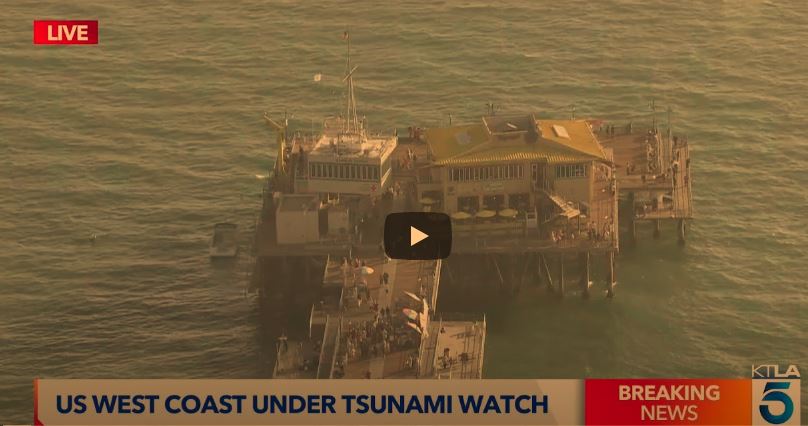On July 29, 2025, a massive 8.8-magnitude earthquake off Russia’s Kamchatka Peninsula triggered tsunami warnings that reached as far as California’s coastline. While this wasn’t the first time the state has faced such warnings, it still sent shockwaves through local communities. The advisory spanned from Cape Mendocino to parts of Southern California, raising alarms about the potential risks.
Despite the initial tremor originating in a distant region, the impact was felt deeply across the Pacific. As the waves began to travel westward, the reminder was clear: California’s vulnerability to tsunamis is ever-present, and the need for continuous preparation has never been more urgent.
Bio Data on Dr. Lucy Jones, Seismologist and Tsunami Preparedness Expert
| Personal Information | |
|---|---|
| Name | Dr. Lucy Jones |
| Profession | Seismologist and Expert on Natural Disasters |
| Career Highlights | Seismologist at Caltech; Founder of the Dr. Lucy Jones Center for Science and Society |
| Publications | Authored numerous books and scientific papers on seismic hazards |
| Notable Contributions | Led community preparedness campaigns; Known for tsunami risk education efforts |
| Expert Advice | Advocates for integrating technology to better predict seismic events and mitigate risks |
| Website | Dr. Lucy Jones Center |
Understanding the Tsunami Threat in California
California, with its long coastline and proximity to the Pacific’s tectonic plate boundaries, is no stranger to the risks posed by tsunamis. A threat can arise quickly, as was seen with the 8.8-magnitude earthquake in Russia. While the immediate danger of a massive tsunami was avoided this time, the advisory reminded everyone that the potential for disaster remains.
The advisory covered numerous communities, including some of California’s largest coastal cities. These areas, including parts of San Francisco and Monterey, are particularly vulnerable due to their proximity to the Pacific Ocean. Tsunami warnings are not just theoretical—they are based on real-time seismic data, making preparation a crucial aspect of survival.
The Growing Role of Technology in Tsunami Prediction
Technology has made it easier for authorities to predict the potential for tsunamis, but there’s still a lot of work to do. By combining deep-ocean sensors with seismic activity tracking, experts can now provide quicker, more accurate tsunami warnings. These technologies play a critical role in saving lives.
One of the biggest advancements in recent years is the integration of AI-driven insights to forecast the potential impacts of seismic events. This allows authorities to send more precise alerts, ensuring that communities have a better chance of reacting quickly and safely.
Tsunami Impact: From Japan to California
The tsunami warning didn’t only affect California. Countries around the Pacific Ocean, including Japan, Taiwan, and the Philippines, also issued alerts. Japan, for instance, saw waves rise up to 3 meters in height, prompting evacuations along its eastern coast. Hawaii and Alaska also braced for impact, with officials in both regions taking swift action.
California’s response was swift, but the concern remained—tsunamis aren’t predictable in terms of size or timing. In some cases, the first wave is not the largest. The advisory, which was issued for several hours, encouraged people to stay vigilant and be prepared for any potential danger.
Preparing for the Next Tsunami: What California Can Learn
This event has once again highlighted the importance of preparation. California’s tsunami preparedness plans have certainly improved, but there’s always room for growth. More people are becoming aware of evacuation routes, and emergency response drills are more frequent. But these efforts need to continue.

Dr. Lucy Jones and other experts consistently emphasize that preparedness is not just about having an evacuation plan—it’s about making sure everyone knows what to do and how to stay safe. Whether it’s through public outreach or better technology, the focus should remain on readiness, not just reaction.
Additional Details
- What part of California is at risk for tsunamis?
Coastal areas along the Pacific, including cities like San Francisco, Monterey, and Los Angeles, are at risk. These regions, especially those near major fault lines, are particularly vulnerable. - How powerful is an 8.7 magnitude earthquake?
An earthquake of this magnitude can cause widespread shaking, damage infrastructure, and, in some cases, trigger a tsunami capable of reaching thousands of miles across the ocean. - Was there an 8.7 earthquake in Russia?
Yes, a powerful 8.8 magnitude earthquake occurred off the Kamchatka Peninsula in Russia, leading to tsunami warnings for several Pacific nations, including the U.S. West Coast. - Is there a tsunami heading for California right now?
As of now, the advisory is still in effect, but the danger is not immediate. However, officials urge residents to stay informed and prepared as the situation continues to unfold.
Looking Ahead: Building Resilience
The tsunami warning in California has underscored the need for continued resilience in the face of natural disasters. While advancements in technology and better early warning systems have helped mitigate the impact, communities must remain vigilant. The state’s approach to tsunami preparedness is a model for others but must evolve as new challenges emerge.
In the coming years, California’s ability to handle tsunami risks will depend on a combination of advanced technology, continued public education, and improved infrastructure. The 2025 tsunami advisory serves as a valuable reminder that while the threat of a tsunami may never be fully eliminated, our response to it can—and should—continue to improve. By learning from each alert, California can create a safer, more resilient future.
